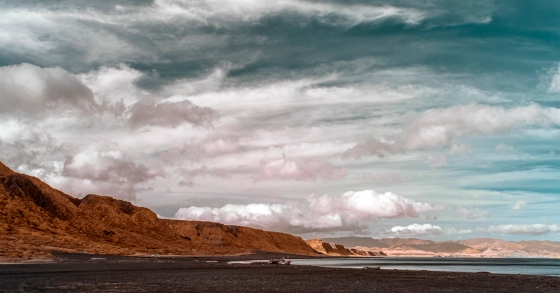Dramatic clouds over orange tinted hills, dark sand and the sea. 720nm IR filter
Category: infrared
The Counahans, Mount Street
Grave of Bridget (d 1891) and Cornelius (d 1904) Counahan, Mount Street Cemetery in Wellington. I’m fascinated that for even … More
Infrared at the beach
Ah, New Year’s day, how better to spend it than at the Wellington Improv Troupe picnic, dining on fancy fish … More
Feathered models with IRChrome filter
The IR chrome filter seeks to recreate the effect of the olden-times kodachrome film, spares the blue and turns foliage … More
Genoa at dusk
We are enjoying a ridiculous one month whirlwind tour of Italy, savoring the mid-winter no-tourist vibe. Weather-wise it mostly like … More
Ahh, Venice
As corny and as scenic and nearly as crowded as I had feared and hoped and feared. I can’t imagine … More
Baboons, despite being the most evil of all apes, are quite photogenic, with eerily human-like eyes and looks-like-a-smile-but-it’s-not mouths. Dithering … More
Distracted by baubles
Such a silly, simple camera toy – a small glass ball, costing about $8. But, great fun to take a … More
Eh, lookee, I won a thing!
Well, I won a part of a bigger thing, the macro segment of The 2018 Sigma D-Photo Amateur Photographer of … More
Bee yoga
This little bee’s grooming routine on my hotel balcony was like some kind of impressively athletic workout. 35mm macro lens, … More









